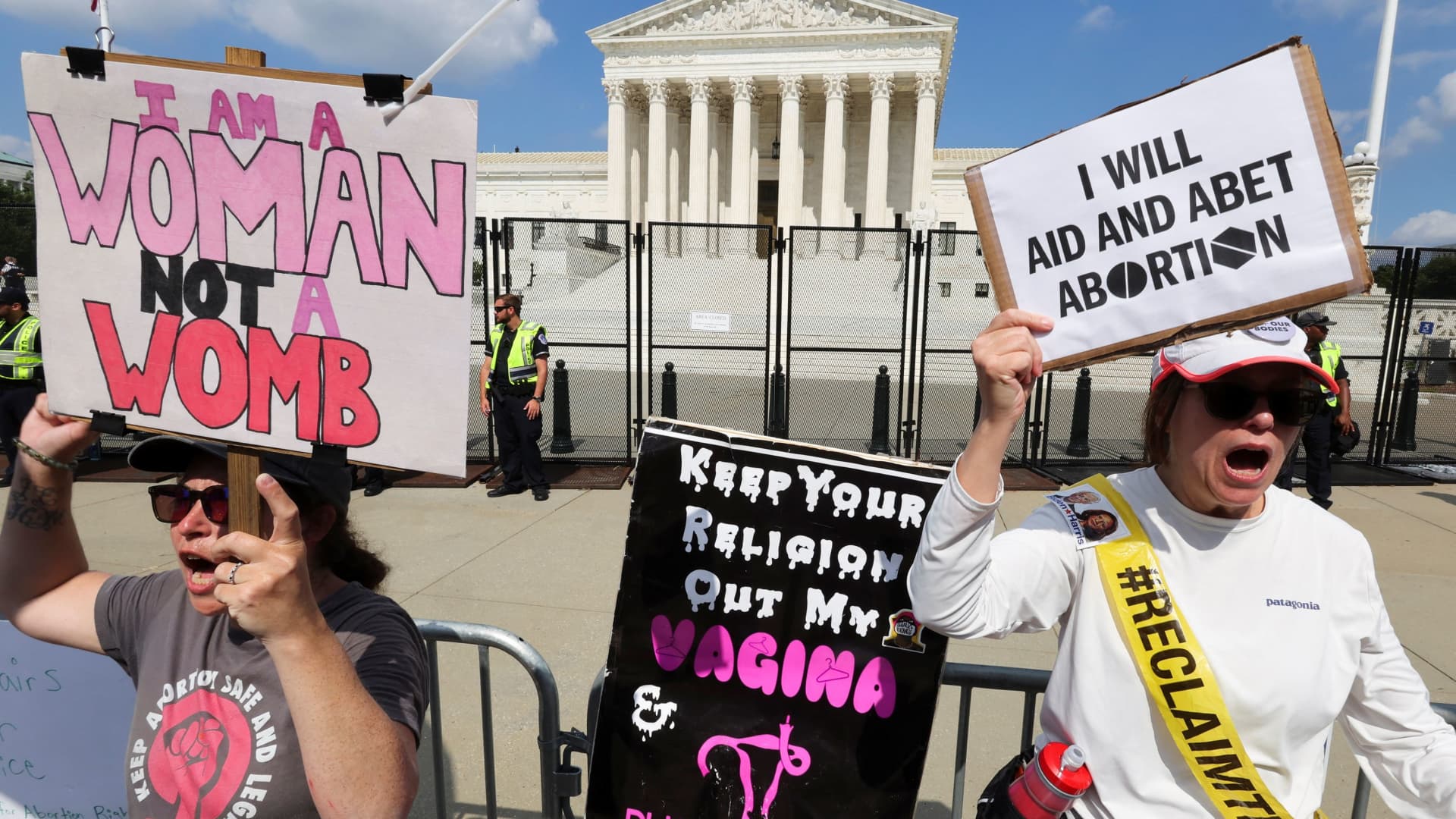An investigation into the leak of a bombshell Supreme Court ruling overturning the federal right to abortion — weeks before it was officially released — failed to identify the culprit, the court said Thursday.
The inconclusive end to the probe was another embarrassment for the Supreme Court, which called the leak “one of the worst betrayals of trust in its history” and “a grave assault on the judicial process.”
Investigators interviewed nearly 100 court employees in the probe, 82 of whom had access to electronic or hard copies of the draft majority opinion by conservative Justice Samuel Alito.
But neither Alito nor the court’s other eight justices were eyed in the investigation, according to an official report.
Politico on May 2 reported that it had obtained a leaked copy of an opinion indicating that the Supreme Court was poised to overturn its five-decade-old ruling in the case known as Roe v. Wade, which found there was a constitutional right to abortion. That draft first circulated among the court’s justices and their clerks on Feb. 10.
On the heels of the leak, Chief Justice John Roberts directed Gail Curley, the marshal of the Supreme Court, to investigate the disclosure.
In June, the Supreme Court in a majority opinion penned by Alito said there was no federal right to abortion — just as the leak had indicated.
The opinion came in a case known as Dobbs v. Jackson Women’s Health Organization, which challenged Mississippi’s restrictive abortion law.
The Supreme Court, as it released Curley’s report on the probe Thursday, said, “In following up on all available leads … the Marshal’s team performed additional forensic analysis and conducted multiple follow-up interviews of certain employees.”
“But the team has to date been unable to identify a person responsible by a preponderance of the evidence,” the court said.
Curley’s 20-page report suggests that the leaker almost certainly was a member of the court staff.
She noted that “the investigation has determined that it is highly unlikely that the Court’s information technology (IT) systems were improperly accessed by a person outside the court.”
Curley said that investigators had examined the court’s computer devices, networks, printers, “and available call and text logs.”
But “investigators have found no forensic evidence indicating who disclosed the draft opinion,” Curley wrote.
She noted that her team of attorneys and federal investigators “conducted 126 formal interviews of 97 employees, all of whom denied disclosing the opinion.”
The report says that after initial interviews were conducted with court staff, each employee was asked to sign an affidavit, under penalty of perjury, saying that they did not disclose the Dobbs draft opinion to anyone not employed by the Supreme Court.
A few employees admitted that they had told their spouses about the draft or the vote count of justices in the case, the report noted.
Curley also wrote that among other steps taken in the probe, “The investigative team received outside assistance with a fingerprint analysis of an item relevant to the investigation.”
“That analysis found viable fingerprints but no matches to any fingerprints of interest,” the report said, without disclosing the nature of the item examined.
Curley said several inquiries are pending in her probe.
“To the extent that additional investigation yields new evidence or leads, the investigators will pursue them,” she added.
In its statement, the Supreme Court said that after Curley’s investigation was completed, the court asked former federal judge, prosecutor and Homeland Security Secretary Michael Chertoff to assess the probe.
Chertoff “has advised that the Marshal ‘undertook a thorough investigation’ and, ‘[a]t this time, I cannot identify any additional useful investigative measures’ not already undertaken or underway,” the court said.
In her report, Curley wrote that the Covid-19 pandemic and the resulting expansion of court staff’s ability to work from home, “as well as gaps in the Court’s security policies, created an environment where it was too easy to remove sensitive information from the building and the Court’s IT networks.”
That, in turn, increased “the risk of both deliberate and accidental disclosures of Court sensitive information,” the report said.
Curley wrote that “too many” members of court staff have access to sensitive documents, and that there is “no universal written policy or guidance” on safeguarding draft opinions.
She also urged the court to address vulnerabilities in the court’s current method for destroying sensitive documents. And she wrote that the court’s “information security policies are outdated and need to be clarified and updated.”
